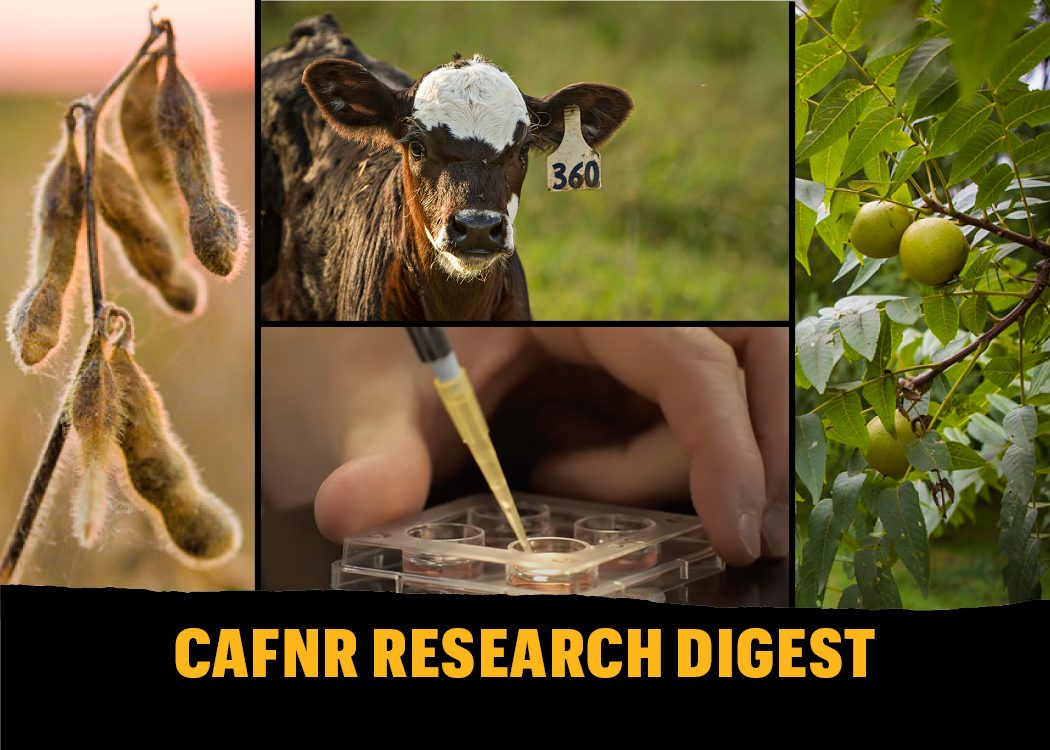|
Animal Sciences Professor Named 2024 Rising Star by the Society for the Study of Reproduction
Amanda Patterson, assistant professor of animal sciences, was recently named at a 2024 Rising Star by the Society for the Study of Reproduction (SSR). The Rising Stars in Reproductive Biology webinar series is designed to introduce and highlight research from new investigators to the SSR membership and broader reproductive biology research community.
CAFNR faculty members have received the following recent grants (listed by Principal Investigator):
Michael Stambaugh, Talladega Division Dendrochronology Research, U.S. Forest Service, 9/25/23-9/18/28, $10,000
Tim Reinbott, Identifying Soil Health Deficiencies in Soybean Production To Develop a “One Health” Sustainable Soybean Production System, United Soybean Board, 10/1/23-9/30/24, $227,056
Shuangyu Xu, A service-oriented local food value chain for small farms: Aligning small farms, food services, and consumers, University of Illinios Urbana Champaign (NIFA), 6/1/23-5/31/24, $73,585
Matthew Lucy, The Fellowship Program, St. Louis Zoo, 10/1/23-9/1/25, $39,773.
Bradley Wilson, Pix management in Cotton Comparing Aggressive and Passive Cultivars, Cotton, Inc., 1/1/24-12/31/24, $16,000
Bradley Wilson, Cotton tolerance to early season weed control utilizing post-emergent herbicides tank mixed with residual herbicides, Cotton, Inc., 1/1/24-12/31/24, $12,000
Andrew Scaboo, Development and Deployment of High Oleic/Low Linolenic Acid Soybean, Smith Bucklin/United Soybean Board, 10/1/23-9/30/24, $645,000
Grover Shannon, Development and Deployment of High Oleic/Low Linolenic Acid Soybean, Smith Bucklin/United Soybean Board, 10/1/23-9/30/24, $105,000
Felix Fritschi, Root system contributions to sustainable soybean production, United Soybean Board, 10/1/23-9/30/24, $297,660
Henry Nguyen, Increasing the Value of U.S. Soybean by Combining High Meal Protein, High Yield and Other Valuable Traits, Agricultural Research Service, 10/1/23-12/31/23, $20,000
Felix Fritschi, Identification of genomic regions underpinning soybean phosphorus uptake and use efficiency to improve sustainability of soybean production, United Soybean Board, 10/1/23-9/30/2024, $192,530
Chase Floyd, Economic Evaluation of Cotton Bt Technology Traits in the Missouri Cotton, Cotton, Inc., 1/1/24-12/31/24, $20,000
Chase Floyd, Comparison of two spotted spider mite (Tetranychus urticae) infestations on common Missouri cotton varieties, Cotton, Inc., 1/1/24-12/31/24, $18,000
Chase Floyd, Evaluating Termination Timing of Insecticides for Cotton Production in Missouri, Cotton, Inc., 1/1/24-12/31/24, $11,000
Robin Rotman, Assessment after Engagement, Education & Experiential-learning, U.S. Department of Energy, 9/27/23-9/26/25, $199,997
Jianfeng Zhou, Improving soybean production, seed quality and soil health using digital agriculture technologies, United Soybean Board, 4/1/24-3/31/25, $105,019
Gurbir Singh, Assess Soil Water Chemistry Impacts following Application of Anhydrous Ammonia with CENTURO® Nitrogen Stabilizer in Corn – 2024, Koch Agronomic Services, 11/1/23-3/31/25, $30,058
|
